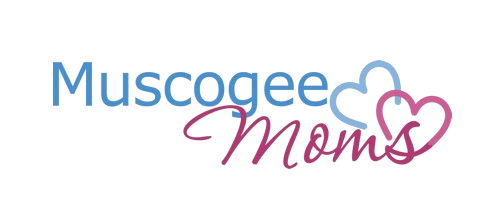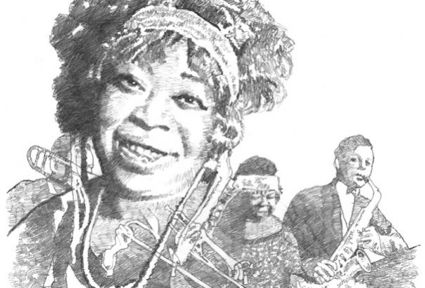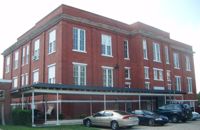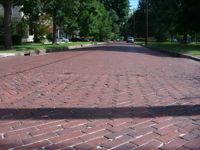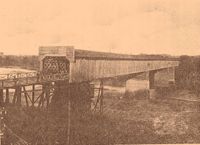Traveling the Black Heritage Trail (Columbus, GA)
Black History Month is a great opportunity to teach your children about the historical accomplishments and struggles of Blacks and African Americans.
The contributions of blacks to Columbus’ heritage is truly a legacy. People like Horace King, a former slave who built bridges all across the south and served four years in the Alabama State Legislature following the Civil War. Then there’s Alma Thomas, a world renown African-American artist. Two of her paintings were chosen by the Obamas for display in the White House.
And I want my children to grow up knowing about that legacy. A great place to start is by visiting the Columbus Black History Museum (315 8th Street). Hours of Operation are Wednesday – Sunday, 2:00pm – 6:00pm
Another way is to take them on a tour of Columbus’ very own Black Heritage Trail. The eight mile Black Heritage Trail is a National Recreation Trail connecting 30 African American Heritage Points of interest in Uptown Columbus.
Points of interest include the following:
- Ma Rainey Home – 805 5th Avenue; Open for tours. The last home of Ma Rainey (1886-1936), the legendary “Mother of Blues” who was one of the first popular female blues singers.
- First African Baptist Church – 901 5th Avenue; Founded by a slave and eleven white men in 1830, The oldest black church in Columbus.
- St. John AME Church – 1510 5th Avenue; Built in 1870.
- Claflin School – 1532 5th Avenue; The first school for blacks in Columbus. Grades one through four. Established in 1868, four years before black schools became part of the Muscogee County School District.
- Metropolitan Baptist Church – 1633 5th Avenue; Established in April 1890. Tours by appointment.
- Restored Train Station – 1200 6th Avenue; Originally Union Train Station, it had separate waiting rooms for blacks and whites. Current home of Columbus Chamber of Commerce.
- St James AME Church – 1002 6th Avenue; Tours by appointment. Houses the second oldest pipe organ in the state. The doors of the church were hand-carved by slaves.
-
Friendship Baptist Church – 831 6th Avenue; The church that Ma Rainey attended and sang in the choir when she retired to Columbus. Exterior viewing only.
- The Liberty Theatre – 823 8th Avenue; Built in 1924 for African-Americans by the Martin family. Entertainers such as Lena Horne, Ethel Walters, Ella Fitzgerald performed here.
- Original William H. Spencer High School – 10th Avenue at Lummas Industries; Historic Marker. On this site was the first high school for African-Americans in Columbus. It was named for WilliamH. Spencer, the first supervisor of the elementary schools for African-Americans. Spencer High School served as the first voting precinct in Muscogee County to use black poll workers.
- Porterdale Cemetery – 10th Avenue; Tours by appointment. Historic Marker. This is an outgrowth of an old slave cemetery. African-American families including Ma Rainer and Primus King are buried her in family plots.
- Old Slave Cemetery – 6th Avenue and 6th Street (Northeast corner). Historic Marker. A burial ground included in Thomas’ Original Survey Map and the City Minutes for the interment of the blacks of Columbus, whether slave or freeperson.
-
Fifth Avenue School – 627 5th Avenue. An elementary school build in 1908 for African-Americans, called the “low” school by children who came downtown from Claflin to complete grades five through nine. Ninth grade was the last year of education for blacks until Spencer High School opened.
- Mildred L. Terry Library – 640 Veterans Parkway; Open to the public; Historic Marker. Built during the 1950’s the library was designed and built to meet the needs of the black community before desegregation. The library was named for its first librarian.
- Fourth Street Baptist Church – 222 5th Street; Tours by appointment. In 1900, the Mt. Canaan Church was established when a few African-Americans met to worship under a fig tree on 3rd Avenue. In 1901, one of the leaders separated from this group and started New Canaan Baptist Church, from which Fourth Street Baptists evolved. A book has been published on the church’s history.
- The Spencer House – 8th Street and Veterans Parkway. Tours available by appointment. National Historic Register. William H. Spencer was the fist African-American to serve as Supervisor of Colored Schools in Muscogee County. Built in 1912, his house is an outstanding example of Neoclassical Revival architecture popular during the early 20th century.
- Primus King Site – Columbus consolidated government Building. This site symbolizes the courageous act of Primus King, when on July 4, 1944, he presented himself to vote at the old brick courthouse, also located here. He was denied the right to vote and subsequently won a court case establishing the right to vote for the black-man throughout the state of Georgia.
- First Interracial Law Firm in Columbus – 832 1st avenue; Exterior viewing only. this was the location of the law firm of John Allen and Bobby Peters. Allen, an African-American man, is now a Superior Court Judge, and Peters, a southern white man, served as Mayor for two terms. Both men are Columbus natives and received their education in our public schools.
- Columbus Urban League – 802 1st Avenue. build between 1870-1895, this building depicts the typical southern church style with Gothic influence of that period.
-
Brick Streets Laid by Slaves – Preserved on Broadway between 4th and 9th Streets in the Historic District.
- Springer Opera House – 10th Street at 1st Avenue; Tours available Monday and Wednesday at 3:30pm. National Historic Landmark. “Ma” Rainey made her first appearance on the state in 1900.
- Dr. Thomas H. Brewer Assassination Site – 1025-1/2 1st Avenue; Exterior viewing only; National Historic Register. Dr Thomas H. Brewer spearheaded the Primus King case and served as President of the local branch of the NAACP. He was assassinated outside his office on February 18, 1956. (Historic Marker.)
- Temperance Hall – 1st Avenue between 12th and 13th Streets (west side) Historic Marker only. This was the site of the first black public school in Columbus, while was founded in 1872.
- City Mills – 1st Avenue and 18th Street; Exterior viewing only. National Historic Register. This mill was build by Horace King, a free person of color and former slave (see #27)
- Greater Shady Grove Baptist Church – 1901 2nd Avenue; Tours available by appointment. In the church basement are remnants of the old Carnes Confederate Hospital. There are stores that blacks would sing and tend to the soldier patients.
-
Kinfolks Corner – Slave Auction Site – 10th Street and Front Avenue; Exterior viewing only; Historic Marker. For decades, this site was the social gathering place on Saturdays for the African-American community of farmers from Alabama.
- Dillingham Street Bridge – Bay Avenue crossing to Alabama; Historic Marker. Horace King, master bridge builder, assisted his master, John Godwin in building the Dillingham Street Covered Bridge in 1832.
